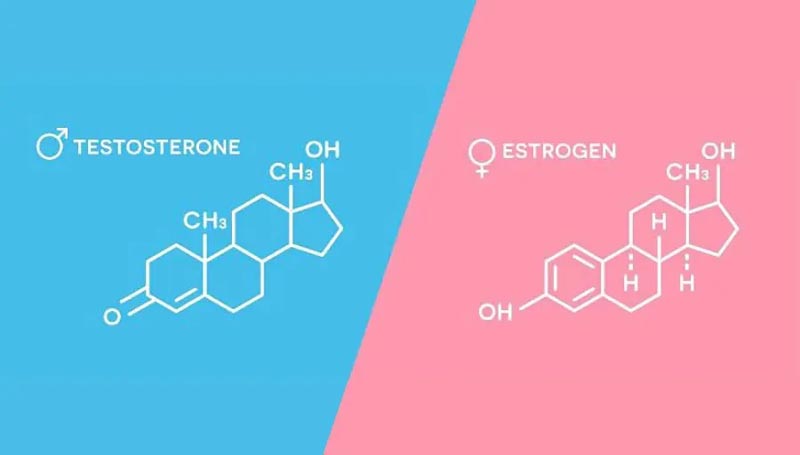Summary
Background
In the Netherlands, puberty suppression treatment is available for transgender adolescents under 18 years of age. When gender dysphoria persists, testosterone or estradiol can be added as gender-affirming hormones in transitioning youth. We investigated the proportion of people who continued gender-affirming hormone treatment at follow-up after starting puberty suppression and gender-affirming hormone treatment in adolescence.
Methods
In this cohort study, we used data from the Amsterdam Gender Dysphoria Cohort (ACOG), which included people who visited the Amsterdam UMC gender identity clinic, location Vrije Universiteit Medisch Centrum , The Netherlands, for dysphoria. of genre. People with disorders of sexual development were not included in ACOG.
We included people who began medical treatment in adolescence with a gonadotropin-releasing hormone agonist (GnRHa) to suppress puberty before age 18 years and who used GnRHa for a minimum of 3 months before adding gender-affirming hormones. . We linked these data to a nationwide prescription registry provided by Statistics Netherlands (Centraal Bureau voor de Statistiek) to verify a gender-affirming hormone prescription at follow-up.
The primary outcome of this study was a gender-affirming hormone prescription at the end of data collection (December 31, 2018). Data were analyzed using Cox regression to identify potential determinants associated with an increased risk of discontinuing gender-affirming hormone treatment.
Results
720 people were included , of which 220 (31%) were assigned at birth as males and 500 (69%) at birth as females. At the start of GnRHa treatment, the median age was 14·1 (IQR 13·0–16·3) years for people assigned male at birth and 16·0 (14·1 –16·9) years for people assigned female at birth.
The median age at the end of data collection was 20·2 (17·9–24·8) years for those assigned male at birth and 19·2 (17·8–22·0) years for those assigned male at birth. assigned female at birth. 704 (98%) of people who had started gender-affirming medical treatment in adolescence continued to use gender-affirming hormones at follow-up.
Age at first visit, year of first visit, age and pubertal stage at start of GnRHa treatment, age at start of gender-affirming hormone treatment, year of start of hormone treatment Gender-affirming hormones and gonadectomy were not associated with discontinuation of gender-affirming hormones. Hormones
Interpretation
Most participants who started gender-affirming hormones in adolescence continued this treatment into adulthood. Continuation of treatment is reassuring considering concerns that people who began treatment in adolescence may discontinue gender-affirming treatment.

Comments
A study from a clinic in the Netherlands suggests that 98% (704 of 720) of adolescents with gender dysphoria who started gender-affirming hormone treatment as adolescents continued to use it at follow-up.
This is the largest study to date investigating the continuation of gender-affirming hormone treatment in those who began treatment in adolescence.
Among people treated at a gender identity clinic in the Netherlands, those who used puberty suppression treatment before age 18 and then started gender-affirming hormones, 98% (704 of 720) continued using them during follow-up, according to an observational study published in the journal The Lancet Child & Adolescent Health .
Marianne van der Loos, MD at Amsterdam UMC, Vrije Universiteit Medical Center Amsterdam, Netherlands, says: "Our study looked at people treated at a gender identity clinic in the Netherlands, which offered puberty suppression treatment. followed by gender-affirming hormones for transgender people for over 20 years, to understand how many people continued to use hormone therapy. We found that the vast majority of people continued to use gender-affirming hormones, which is reassuring in the context of recent heightened public concern regarding transition regret.”
In 1998, the Netherlands was the first country to introduce a new treatment protocol for young people under 18 years of age diagnosed with gender dysphoria. After a thorough diagnostic evaluation, adolescents are offered reversible puberty suppression treatment (using a gonadotropin-releasing hormone). agonist). This stops the physical changes associated with puberty that can be stressful for teens with gender dysphoria and gives them time to explore their gender identity. Those who continue to wish to transition medically may subsequently begin gender-affirming hormonal treatment after age 15 or 16, which means taking medications (i.e., estradiol or testosterone) to induce physical feminization or masculinization in a way that aligns with your gender identity.
However, puberty suppression and gender-affirming hormone treatment for people under 18 years of age has recently become a topic of public debate and in some countries legal steps have been taken to prohibit or limit its use, such as in US and UK. Although short-term studies have demonstrated the beneficial effects of puberty suppression treatment on the mental and physical health of adolescents, long-term follow-up data are lacking.
The study used medical records from a gender identity clinic in Amsterdam. People were included if they used puberty suppression treatment before age 18 for a minimum of three months before using gender-affirming hormones. To investigate the proportion of these people who continued to use treatment during follow-up, the study linked their records to the national prescription registry to determine whether people were still receiving a prescription for gender-affirming hormones at the end of data collection ( December 2018). Follow-up periods varied by patient, with the most recent patients having the shortest follow-up period. The authors emphasize that the results of patients with shorter follow-up periods should be considered with caution.
720 people were included in the study, of which 31% (220) people were assigned as male at birth (AMAB) and 69% (500) as female at birth (AFAB). For AMAB individuals, the median age was 14 years when puberty suppression treatment began and 20 years at the end of follow-up. For AFAB individuals, the median age was 16 years when they started puberty blockers and 19 years at the end of follow-up.
Of the 720 people in the study, 704 continued using gender-affirming hormones until follow-up, representing 98% of people who continued hormone therapy.
For the 2% (16 of 720) of people who no longer use gender-affirming hormones, it is unknown whether they stopped using hormones because they regretted transitioning or changing gender. The authors emphasize that there are several plausible explanations, including a lack of knowledge about the importance of continuing hormone treatment after gonadectomy (surgical removal of the testicles or ovaries), or participants with non-binary gender identity who only wish to use the hormonal treatment for a short period of time. The authors recommend that future research identify the reasons why a small number of people who begin this treatment in adolescence stop taking gender-affirming hormones.
The study did not identify any factors associated with a greater likelihood of discontinuing gender-affirming hormone treatment. People’s age or the year they first visited the clinic, when they started puberty suppression treatment, when they started gender-affirming hormone treatment, and whether they had had a gonadectomy were not associated with discontinuation. .
An increase in referrals of AFAB people to this gender identity clinic was documented after 2012, so we also investigated whether discontinuation rates were different before this year compared to later. The results suggest that there is no difference between continuation rates before 2012 and after.
The authors point out several limitations of their study. Prescribing gender-affirming hormones does not necessarily mean that a person is taking the medication as prescribed, which could lead to an overestimation in the number of people who continue to use them. On the other hand, prescriptions may not have been recorded for anyone obtaining these medications outside of the regular healthcare system, which could underestimate the number of people who continue to use them.
















